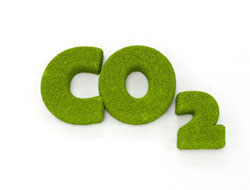Can we convert CO2 emissions into fuel?
The increasing levels of carbon dioxide (CO2) emissions in the atmosphere alongside other gases contribute to the trapping of solar energy and result in global warming. To mitigate the greenhouse effect, scientists have devised ways to convert such dangerous gases into useful fuel sources. The aim of the EU-funded 'Electrocatalytic gas-phase conversion of CO2 in confined catalysts' (ELCAT) project was to investigate the feasibility and the approach of converting CO2 gas to liquid fuel. Project partners used catalyst cells to facilitate the gas-phase reduction of CO2, utilising proton or oxygen anion membranes for the chemical reaction. Specialised nanotubes were developed as part of the catalyst to enable the confinement of CO2. Study results showed that CO2 reduction to hydrocarbons and alcohols is feasible at room temperature and atmospheric pressure. Optimisation of the catalyst components through the use of carbon nanotubes and the incorporation of a photocatalyst maximised fuel formation from CO2. Overall, the Elcat project demonstrated the feasibility of converting CO2 emissions into liquid fuel in mild reaction conditions. This novel approach constitutes a prime example of how dangerous global emissions or waste products can be converted to alternative fuel sources.




